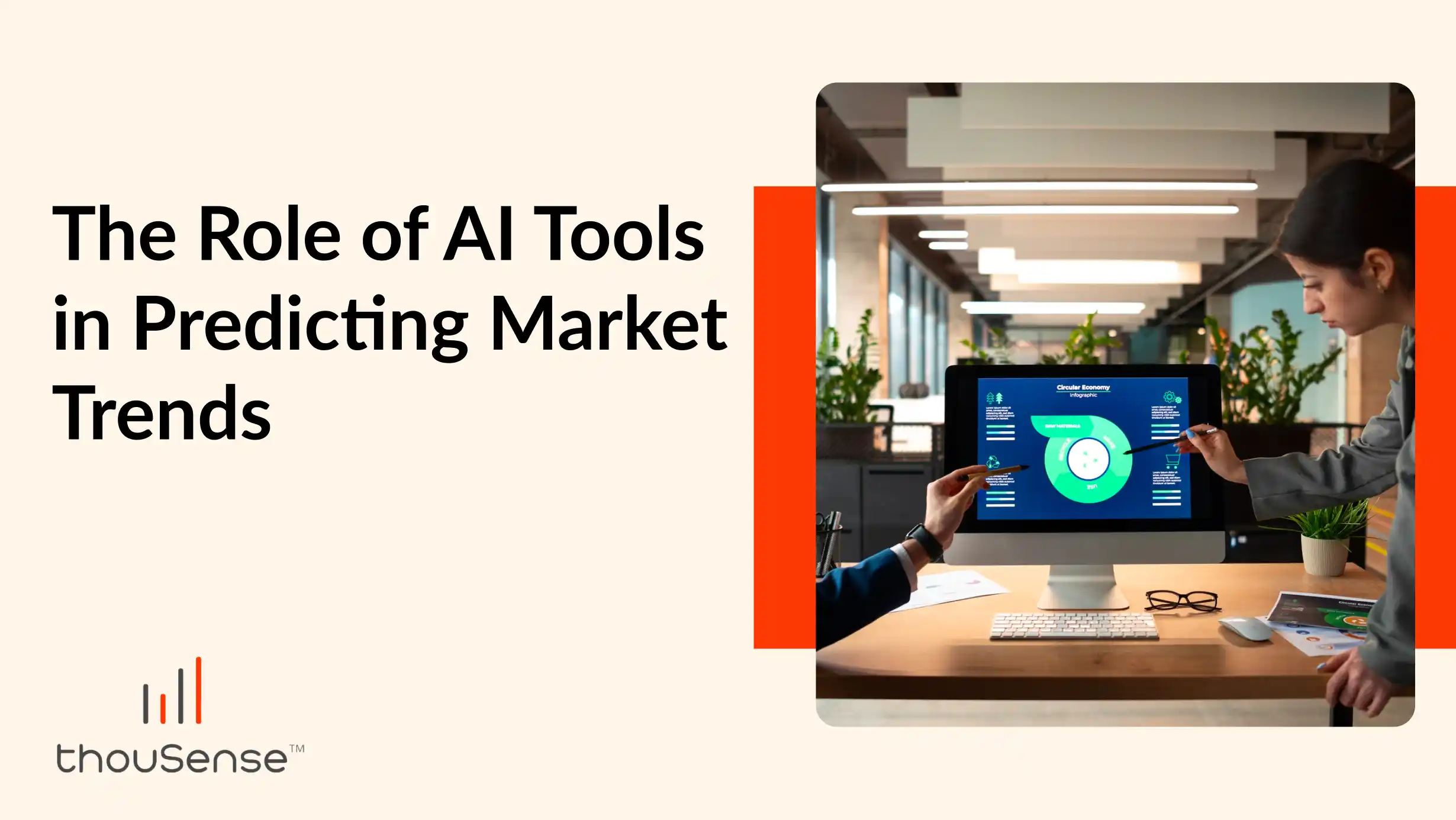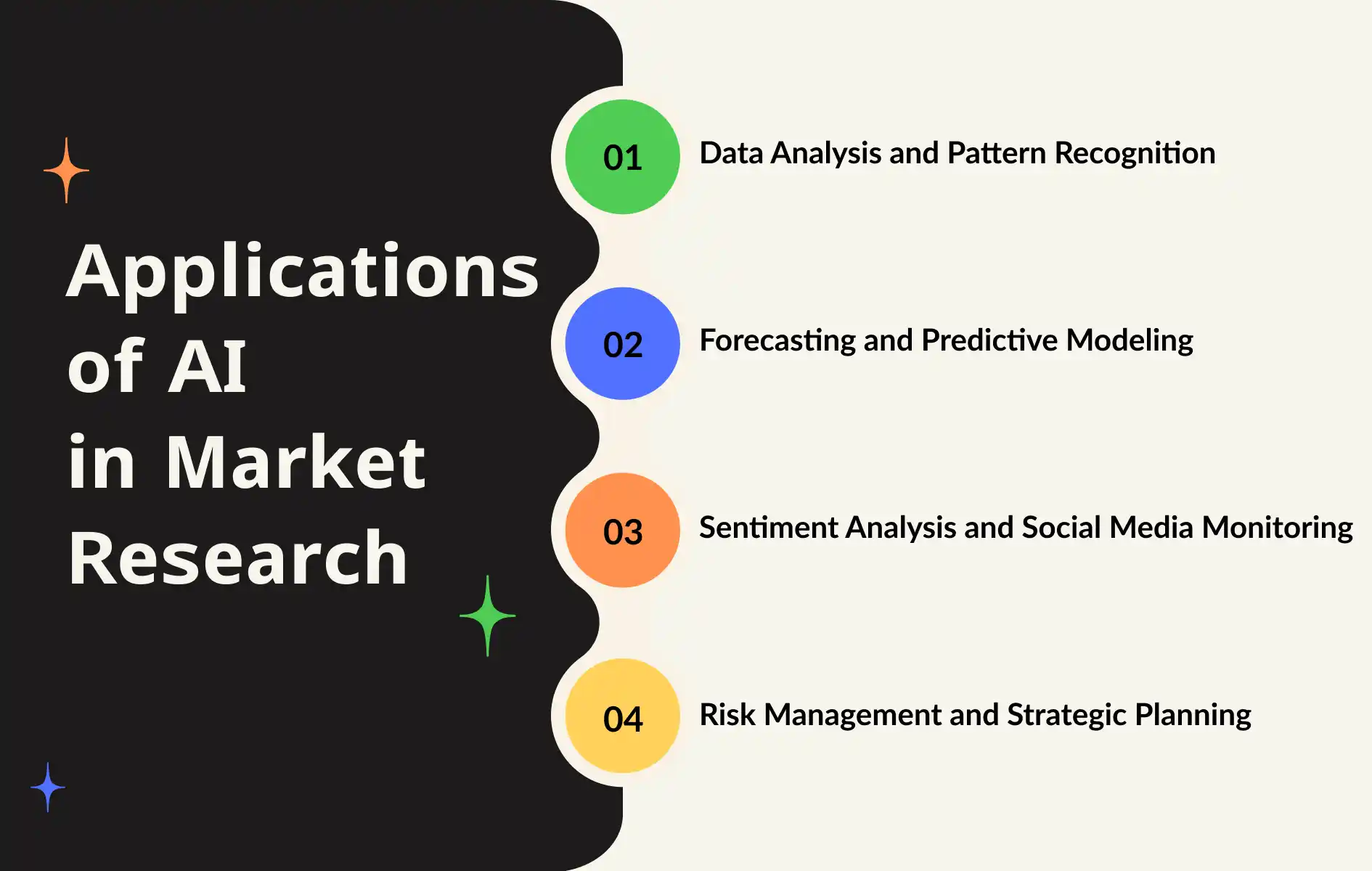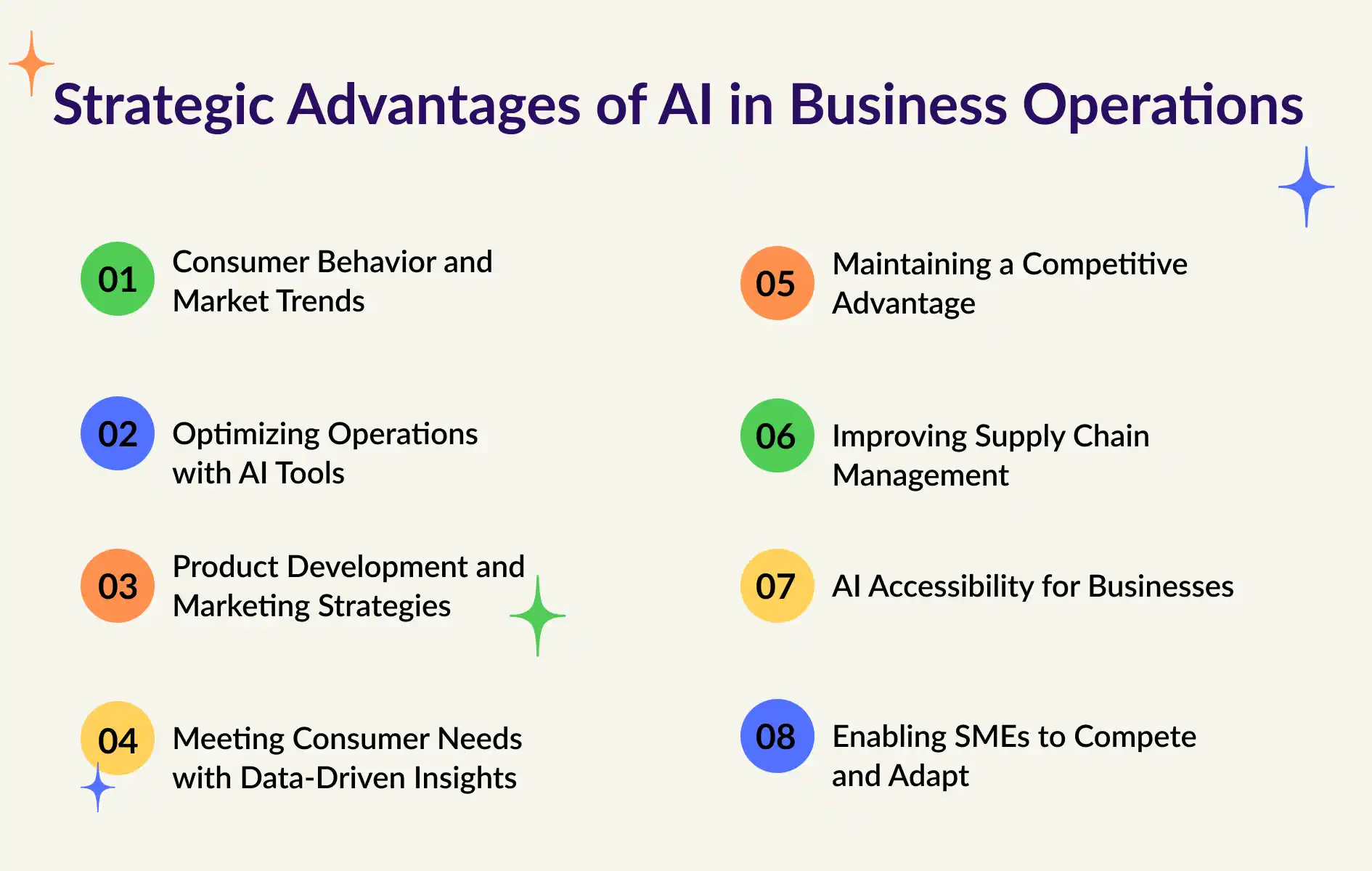The Role of AI Tools in Predicting Market Trends| thouSense

In today's rapidly changing market, it's vital for businesses to grasp and forecast how consumer preferences are shifting. Traditionally, businesses used methods like market research and past sales data to predict demand. But now, with the advent of AI technologies, a new era of predictive analytics has emerged. This allows businesses to anticipate changes in consumer tastes more accurately than ever before. In this blog, we'll explore the role of AI tools in predicting changing consumer preferences across various industries, and what this means for businesses aiming to remain competitive.
Understanding AI in Demand Forecasting
Understanding AI in demand forecasting involves analyzing lots of data to find patterns in how consumers behave. AI, which stands for artificial intelligence, is a type of technology that uses algorithms to do this analysis. These algorithms are part of machine learning, a branch of AI that's good at handling all kinds of data, like information from social media, online reviews, what people buy, and details about different groups of consumers.
One big advantage of using AI for demand forecasting is its ability to look at many different types of data at once. Traditional methods usually only look at past sales numbers and use simple math to make predictions. But AI can handle a lot more information, giving businesses a better understanding of what consumers want.
AI is also good at dealing with data that isn't neatly organized, like comments on social media or reviews online. It uses a technique called natural language processing to make sense of this kind of information. This helps businesses figure out how people feel about their products and what they might want in the future.
Another important thing about AI in demand forecasting is that it keeps getting better over time. As it gets more data, it can improve its predictions, making it more accurate. This means businesses can stay flexible and adjust their strategies as things change in the market.
AI is also good at spotting complicated patterns in data that humans might miss. This helps businesses see opportunities or risks they wouldn't have noticed otherwise.
Using AI for demand forecasting doesn't just make predictions better; it also makes decision-making easier. By automating tasks like collecting and analyzing data, AI frees up people to focus on important decisions. This makes businesses more efficient and helps them make smarter choices about how to respond to what's happening in the market.
Overall, AI is changing the way businesses understand and predict consumer behavior. By using AI, companies can learn more about their customers, find new opportunities, and stay competitive in a fast-changing world.
Current Applications of AI in Market Research
In this section, we'll explore the current applications of AI in market research, highlighting the various ways AI tools are reshaping how businesses understand consumer behavior and plan for the future. Specifically, we'll delve into four key areas where AI is making a significant impact:

1. Data Analysis and Pattern Recognition:
In data analysis and pattern recognition, AI tools help businesses understand consumer behavior better. These tools use advanced techniques to study big sets of data and find important information. By looking at past consumer data and things like market trends, AI can see patterns that show what consumers like.
With this approach, businesses can make smarter decisions about things like making new products, how to advertise them, and managing their stock. For example, AI might notice that more people are interested in eco-friendly products, or that good online reviews lead to more sales. This helps businesses make products that people want, advertise them to the right people, and make sure they have enough stock when people want to buy.
AI also helps businesses stay flexible in a changing market. By keeping an eye on what consumers are doing, AI can spot trends early on. This lets businesses change their plans quickly to keep up with what consumers want.
Overall, using AI to analyze data is a big deal for businesses. It helps them make better decisions and keep up with what consumers want, so they can stay successful.
2. Forecasting and Predictive Modeling:
Forecasting and predictive modeling are crucial in AI-powered demand forecasting. AI algorithms use various techniques like regression analysis, clustering, and time series forecasting to predict how consumers will behave in the future by analyzing patterns in past data. These models learn from past trends to anticipate shifts in consumer preferences, helping businesses plan ahead. By constantly updating their models with fresh data, AI tools can adapt to new trends and give precise forecasts for changes in demand.
3. Sentiment Analysis and Social Media Monitoring:
Social media is a big deal for understanding how people feel about stuff. AI tools can check social media to see if people like something or not. They use algorithms to look at what people say and figure out if it's positive, negative, or neutral.
This helps businesses know what people think about their products, so they can make them better and advertise them in the right way. For example, if lots of people are talking about liking eco-friendly products, a company might decide to make more of them.
By keeping an eye on social media, businesses can also see what's trending and what people are talking about. This helps them stay ahead of the game and connect better with their customers.
4. Risk Management and Strategic Planning:
Planning for the future and dealing with risks is important for businesses. AI tools can help by looking at data and predicting what might happen in different situations. For example, if sales are expected to go down for a product, a company might decide to make less of it or spend less money on advertising.
AI also helps businesses see new opportunities and plan how to take advantage of them. By looking at trends and what competitors are doing, businesses can stay ahead and make smart decisions.
By using AI to plan and manage risks, businesses can be more confident about the future and keep growing.
The Evolution of AI in Demand Forecasting
Artificial intelligence (AI) keeps getting better at predicting what people will buy. New technologies like natural language processing (NLP), deep learning, and predictive analytics are making AI tools smarter. For instance, NLP can understand what people say online to figure out if they like something or not. Deep learning helps find complex patterns in lots of data, so businesses can see small changes in what people buy. As AI keeps improving, it helps businesses make better decisions and stay ahead in the market.
The world of AI in demand forecasting is always changing. With each new advancement in technology, AI gets better at predicting what consumers want. Take, for example, the recent developments in natural language processing (NLP), deep learning, and predictive analytics. These technologies have revolutionized the capabilities of AI tools, making them smarter and more effective in understanding and predicting consumer behavior.
As AI continues to evolve, its impact on demand forecasting becomes increasingly profound. The advancements in AI technologies enable businesses to make more informed decisions and adapt quickly to changing market conditions. By leveraging AI-driven insights, businesses can stay competitive and meet the ever-changing demands of consumers.
Implications for Businesses
Using AI to understand what customers want has big benefits for businesses. It helps them make products people actually like, plan how to sell them better, and manage their supplies well. AI isn't just for big companies anymore. Small businesses can use it too, which helps them compete better with bigger ones. Overall, AI is changing how businesses work, making them smarter and more competitive.

1. Consumer Behavior and Market Trends
AI in demand forecasting has significant implications for businesses across all industries, offering deeper insights into consumer behavior and market trends.
2. Optimizing Operations with AI Tools
By leveraging AI tools, businesses can optimize their operations, from product development to marketing and supply chain management.
3. Product Development and Marketing Strategies
One key benefit of AI-driven forecasting is its ability to inform both product development and marketing strategies.
4. Meeting Consumer Needs with Data-Driven Insights
By analyzing consumer data and market trends, businesses can develop products that meet emerging needs and preferences, while also crafting targeted and personalized marketing campaigns.
5. Maintaining a Competitive Advantage
This proactive strategy assists companies in staying ahead of rivals and preserving their competitive advantage.
6. Improving Supply Chain Management
Additionally, AI-driven demand forecasting enhances supply chain management by predicting future demand accurately, optimizing inventory levels, and reducing costs.
7. AI Accessibility for Businesses
Furthermore, the accessibility of AI technologies is leveling the playing field for businesses of all sizes.
8. Enabling SMEs to Compete and Adapt
Small and medium-sized enterprises (SMEs) now have access to advanced analytics and predictive modeling capabilities, enabling them to compete more effectively in the market and adapt to changing trends.
Conclusion
AI tools are changing how businesses predict what consumers want. They use machine learning and data analytics to understand how consumer preferences are changing. From analyzing data to making predictions, AI tools give businesses a complete set of tools to understand and respond to market changes. As AI gets better, businesses that use data to make decisions will be more prepared to see trends, avoid risks, and take advantage of new opportunities in a competitive market.
FAQs
1. How does AI contribute to demand forecasting?
AI tools analyze various data sources to identify patterns in consumer behavior, enabling businesses to make accurate predictions about future demand. By leveraging machine learning algorithms, AI enhances forecasting accuracy and helps companies adapt to market changes effectively.
2. What are the current applications of AI in market research?
AI plays a crucial role in data analysis, pattern recognition, forecasting, sentiment analysis, and social media monitoring in market research. It helps businesses understand consumer preferences, predict market trends, and manage risks strategically, ultimately improving decision-making processes and driving competitiveness.
3. How does the evolution of AI impact demand forecasting?
The continuous advancement of AI technologies, such as natural language processing (NLP) and deep learning, enhances the capabilities of AI tools in understanding and predicting consumer behavior. As AI evolves, businesses benefit from more accurate predictions, better decision-making, and increased competitiveness in the market.